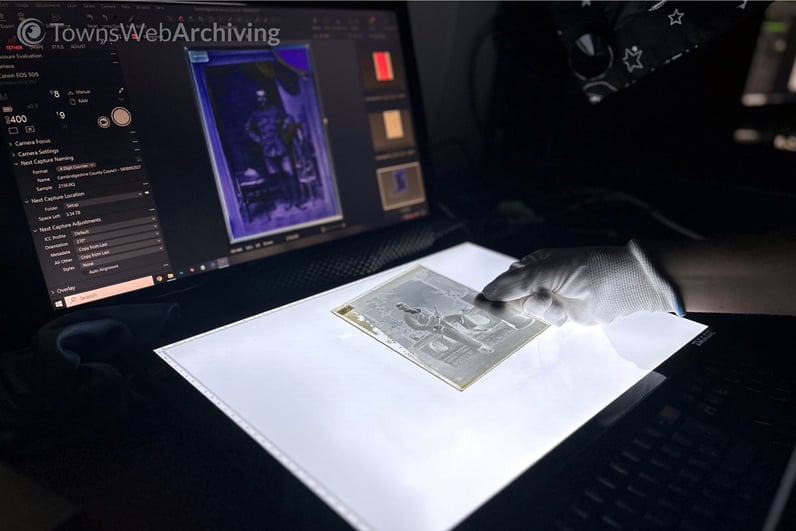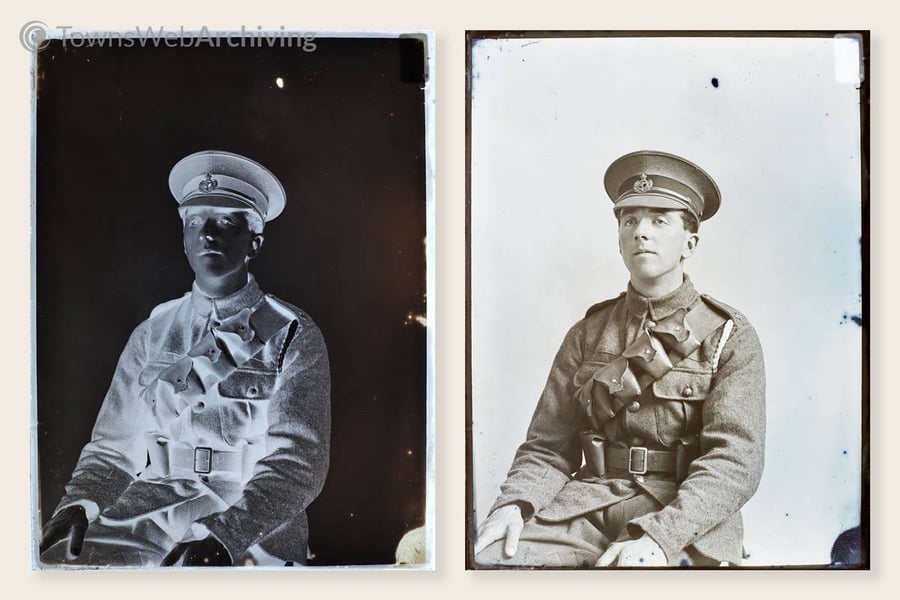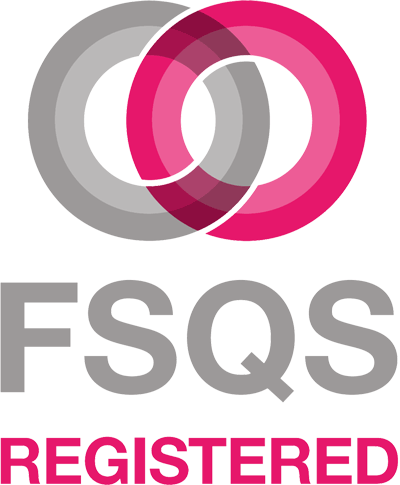
Nestled within the historic town in northwest Dorset, Sherborne Museum has long been the guardian of the town’s captivating history. Since its establishment in 1968, the museum has worked tirelessly to educate, inform, and inspire the community, while protecting and promoting the town’s unique heritage.
As part of this unwavering dedication to their community, Sherborne Museum has recently embarked on a venture with TownsWeb Archiving to protect and share its collection of glass plate negatives, revealing remarkable stories from the history of the town.
These extraordinary artefacts, some captured by the talented local photographer Adam Gosney, offer a mesmerising glimpse into the past. From unseen, images taken during the First World War to snapshots of daily life in Sherborne in the early 1900s. Thanks to a successful funding grant and the expertise of TownsWeb Archiving, Sherborne Museum has fully embraced the digital era, unveiling the contents of these historical treasures and providing invaluable access to the broader community.

A Gift from a Local
The story behind the project is just as fascinating as the images themselves. It all began in the mid-1990s when Sherborne Museum received an extraordinary gift from a local resident—a collection of around a thousand glass plate negatives, with some three hundred believed to be the works of Adam Gosney. Gosney was an influential figure within the town during the late 19th and early 20th centuries and left his mark on Sherborne as an established and skilled photographer, renowned for his ability to capture the beauty of his hometown.
But for a number of years, the content of the glass plate negatives were simply a mystery. Generously gifted to the museum by the family of the late David Hunt, a former Sherborne resident and keen photographer, it isn’t known how he had come across the treasure. It’s speculated that Hunt may have bought them at auction, or that the plates were most likely salvaged in the aftermath of World War I.
With the help of digitisation, however, the secrets of the glass plates have finally been revealed, shining a light on an unprecedented and poignant visual narrative of the servicemen and women, including Red Cross nurses and wounded soldiers. Further glass plate negatives have unearthed glimpses into the everyday life of Sherborne residents, showcasing Sherborne's iconic buildings, past carnival festivals, and the traditional idyllic countryside surrounding the town.

A Fragile Legacy
Despite an immense gratitude for the remarkable gift, preserving these fragile glass plate negatives initially presented a significant challenge for the volunteer-run museum. Ultimately, it was the concerns over storage conditions and the potential for damage which launched the curators into action, with the desire to share Sherborne's rich heritage with the community also fueling the determination to digitise the collections. Securing a grant from Dorset Council provided the final push needed to get the project underway, allowing the museum to protect these delicate artefacts and, finally, bring them to life in the digital realm.
Dorset Council’s generous grant from the S106 fund is awarded to those prioritising community benefits. Sherborne Museum’s bid, since its aim was to increase access to local heritage, perfectly aligned with this vision, and, upon hearing the news their grant was accepted, they seized the opportunity to collaborate with TownsWeb Archiving to digitise the museum’s collection of 1,115 glass plate negatives. Each plate was delicately handled, assigned a unique reference, and carefully stored in protective envelopes during the digitisation process.
Townsweb Archiving were easy to communicate with and have kept us informed at all stages of the project so far. We were impressed with the speed with which everything was facilitated, from the pick up of our glass plate negatives to the actual scanning of the images and the arrangements made for the training and publicity. The quality of the images scanned was superlative. All the staff we have met so far have been incredibly friendly and polite, and take time and trouble to explain their process.
Elisabeth Bletsoe
Curator, Sherborne Museum
Protecting the Past for the Future
The digitisation process, made possible by this partnership, not only ensured the long-term preservation of the glass plate negatives but also unlocked their potential for engagement and appreciation, breathing new life into these fragile artefacts and revealing their contents over a hundred years later. Sherborne Museum can now proudly exhibit these extraordinary photographs, celebrate the town's history and pay homage to the remarkable legacy of Adam Gosney, the talented photographer behind the lens.
Sherborne Museum’s efforts have seamlessly transitioned them to the next phase of their project: showcasing the content of the glass plate negatives beyond the local community on a fresh website powered by PastView. But more on this another time…


 USE OUR ONLINE
USE OUR ONLINE








